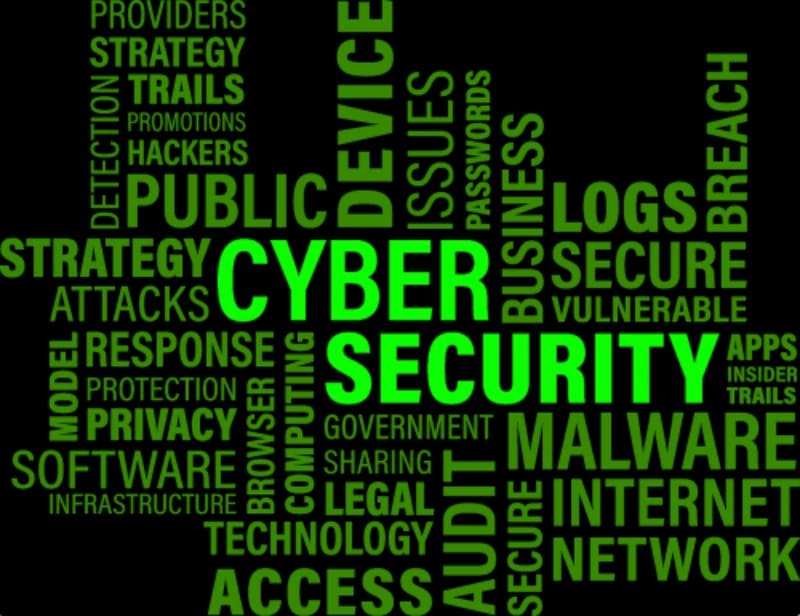In today’s world, the supply chain is tightly interconnected through networks and technologies.
While this improves efficiency it also exposes vulnerabilities. As businesses increasingly depend on technology to streamline their operations it becomes crucial to have cybersecurity measures in place to protect against threats, in the supply chain.
In this in-depth analysis, we will explore how cybersecurity is evolving within the supply chain and discuss strategies that are vital for resilience, against cyber threats.
Understanding the Digital Landscape of the Supply Chain
In today’s age, the supply chain has evolved beyond a progression of products being transported from the manufacturer to the distributor and then to the retailer.
Instead, it has transformed into a web of interconnected entities that depend on systems, for effective communication, data sharing, and operational optimization.
This digitization brings about unprecedented opportunities but also opens the door to a myriad of cybersecurity risks.
The Interconnected Supply Chain Ecosystem
The modern supply chain ecosystem comprises suppliers, manufacturers, distributors, logistics partners, and retailers, all relying on digital platforms for seamless collaboration.
Each point in this network represents a potential entry point for cyber threats, making it crucial to address vulnerabilities comprehensively.
The Role of Technology in Supply Chain Operations
Technology holds a role, in optimizing supply chain operations thanks, to Internet of Things (IoT) devices, cloud-based platforms Artificial Intelligence (AI), and Big Data analytics.
These advancements enhance the visibility, traceability, and efficiency of the supply chain.
However, they also create opportunities for cyber attackers to exploit.
Cybersecurity Threats in the Supply Chain
Understanding the specific threats that the supply chain faces is essential for developing effective cybersecurity strategies. Several prominent threats loom over the digital landscape of the supply chain:
1. Phishing Attacks
Phishing attacks involve deceptive tactics to trick individuals into revealing sensitive information.
In the supply chain, a phishing attack might target employees of a logistics company, compromising credentials and allowing unauthorized access to critical systems.
2. Ransomware
Ransomware attacks encrypt a system’s data and demand a ransom for its release.
For the supply chain, a ransomware attack on a manufacturing facility or logistics partner can disrupt operations, leading to delays and financial losses.
3. Supply Chain Disruptions
Cyberattacks can also lead to physical disruptions in the supply chain. For instance, targeting the systems controlling automated processes in a warehouse could result in significant disruptions to inventory management and order fulfillment.
4. Data Breaches
The exposure of information, like customer data or exclusive designs, can result in repercussions. If there are data breaches, within the supply chain it can harm a company’s reputation cause losses, and even lead to consequences.
5. Third-Party Vulnerabilities
Third-party vulnerabilities occur when various participants, in the supply chain rely on vendors to offer a variety of services.
If these vendors lack cybersecurity measures they can become points of entry for attackers to penetrate the network of the supply chain.
The Importance of Cybersecurity in the Supply Chain
A robust cybersecurity framework is not merely a response to potential threats; it is a proactive strategy essential for the resilience and sustainability of the supply chain. Here’s why cybersecurity is of paramount importance:
1. Protection of Sensitive Information
The supply chain often deals with sensitive data, including product designs, intellectual property, and customer information.
Cybersecurity measures safeguard this information from unauthorized access and potential misuse.
2. Maintaining Operational Continuity
Disruptions, in the supply chain can create a domino effect on operations. Cybersecurity measures play a role, in maintaining continuity by preventing and minimizing the consequences of cyber threats.
3. Preserving Brand Reputation
A cyber incident in the supply chain can tarnish the reputation of the entire business. Customers, partners, and stakeholders trust companies to secure their data and deliver products or services reliably.
4. Compliance with Regulations
In many industries, there are stringent regulations regarding data protection and cybersecurity.
Adhering to these regulations not only avoids legal consequences but also demonstrates a commitment to ethical business practices.
Cybersecurity Best Practices for the Supply Chain
Safeguarding the supply chain against digital threats requires a multi-faceted approach. Here are key cybersecurity best practices to fortify the digital resilience of the supply chain:
1. Risk Assessment and Management
Conduct regular risk assessments to identify vulnerabilities in the supply chain. Understand the potential impact of cyber threats on different aspects of operations and implement risk management strategies accordingly.
2. Employee Training and Awareness
Human error is a significant factor in cybersecurity incidents. Comprehensive training programs for employees can raise awareness about potential threats, teach best practices for cybersecurity, and empower staff to recognize and report suspicious activities.
3. Vendor Management and Due Diligence
Evaluate the cybersecurity measures of all partners and vendors in the supply chain. Implement stringent security requirements in contracts and conduct regular audits to ensure compliance.
4. Secure Network Infrastructure
Implement robust network security measures, including firewalls, intrusion detection systems, and encryption protocols. Regularly update and patch software to address known vulnerabilities.
5. Endpoint Security
With the proliferation of remote work and the use of various devices, securing endpoints is crucial.
Employ endpoint protection measures such as antivirus software, secure configurations, and regular monitoring.
6. Incident Response Planning
Develop a comprehensive incident response plan outlining the steps to be taken in the event of a cybersecurity incident.
This plan should include communication protocols, containment strategies, and steps for recovery.
7. Data Encryption and Access Controls
Implement encryption for sensitive data both in transit and at rest. Establish strict access controls to ensure that only authorized personnel can access critical systems and information.
8. Regular Security Audits and Assessments
Conduct regular security audits and assessments to identify and address potential weaknesses.
This proactive approach helps in staying ahead of emerging cyber threats and evolving security risks.
Empowering Secure Digital Connectivity
As businesses navigate the complex landscape of supply chain cybersecurity, the choice of a reliable internet service provider becomes crucial.
Windstream Internet stands out as a provider that not only delivers high-speed connectivity but also prioritizes security in the digital realm.
Network Security Features
1. Firewall Protection
It offers robust firewall protection to create a barrier between the internal network and potential cyber threats.
This helps prevent unauthorized access and safeguard sensitive data.
2. Secure VPN Services
Virtual Private Network (VPN) services enable secure communication over the internet
Safeguarding the Supply Chain: Specific Cybersecurity Measures
Risk Assessment and Management
Regular Vulnerability Assessments
Conduct routine vulnerability assessments to identify and address potential weaknesses in the supply chain’s digital infrastructure.
This proactive measure involves scanning networks, systems, and applications for known vulnerabilities and applying patches or updates promptly.
Impact Analysis
Perform a comprehensive impact analysis to understand the potential consequences of cyber threats on different aspects of supply chain operations.
This analysis informs the development of risk management strategies tailored to mitigate specific risks and enhance overall resilience.
Employee Training and Awareness
Cybersecurity Training Programs
Implement cybersecurity training programs for employees at all levels of the supply chain.
These programs should cover topics such as recognizing phishing attempts, using secure password practices, and understanding the importance of reporting suspicious activities promptly.
Continuous Awareness Campaigns
Conduct regular awareness campaigns to keep employees informed about emerging cyber threats and evolving best practices.
Continuous education ensures that employees stay vigilant and actively contribute to the overall cybersecurity posture of the supply chain.
Vendor Management and Due Diligence
Security Requirements in Contracts
Incorporate stringent security requirements in contracts with supply chain partners and vendors.
Clearly outline expectations regarding cybersecurity measures, data protection, and compliance with industry standards.
Regularly review and update these requirements to align with evolving cybersecurity needs.
Regular Vendor Audits
Conduct regular audits of vendors’ cybersecurity practices to ensure ongoing compliance with security requirements.
This includes assessing their data protection measures, network security protocols, and incident response capabilities.
Secure Network Infrastructure
Firewalls Detection Systems
Make sure that firewalls and intrusion detection systems are in place to monitor and manage outbound network traffic.
These security measures act like a barrier preventing access and helping to promptly identify and address any potential security threats.
Regular Software Updates and Patching
Regularly update and patch software, operating systems, and applications to address known vulnerabilities.
Automated patch management systems can streamline the process, ensuring that security patches are applied promptly to minimize the risk of exploitation.
Endpoint Security
Antivirus and Malware Software
Make sure to install antivirus and anti-malware software on all devices, in the supply chain and remember to keep them updated.
These security tools help add a level of protection by identifying and getting rid of software that may put sensitive data at risk.
Secure Configurations
Implement secure configurations for all endpoints to reduce the attack surface.
This involves configuring devices, applications, and systems with the most secure settings to minimize vulnerabilities that could be exploited by cyber threats.
Incident Response Planning
Comprehensive Incident Response Plan
Create an incident response strategy that clearly defines the actions to be carried out in the event of a cybersecurity incident.
This strategy should encompass assigned teams for response established communication protocols and predefined measures to effectively control and minimize the consequences of a security breach.
Regular Tabletop Exercises
Conduct regular tabletop exercises to simulate cyber incidents and test the effectiveness of the incident response plan.
These exercises help identify areas for improvement, ensure coordination among response teams, and enhance the overall readiness to address cybersecurity incidents.
Data Encryption and Access Controls
Encryption for Sensitive Data
Implement encryption for sensitive data both in transit and at rest. This ensures that even if unauthorized access occurs, the data remains unreadable without the appropriate decryption keys, providing an additional layer of protection.
Strict Access Controls
Establish strict access controls to limit access to critical systems and information. Role-based access permissions ensure that only authorized personnel have the necessary privileges, reducing the risk of unauthorized access and data breaches.
Regular Security Audits and Assessments
Ongoing Security Audits
Conduct ongoing security audits and assessments to identify vulnerabilities and assess the effectiveness of cybersecurity measures.
Regular audits help stay ahead of emerging threats and ensure that the supply chain’s cybersecurity practices evolve with the changing threat landscape.
Importance of Cybersecurity Culture
Fostering a Security-Conscious Environment
Creating a cybersecurity culture within organizations is paramount in today’s digital landscape.
It involves instilling a collective mindset where every individual recognizes their role in safeguarding sensitive information and mitigating cyber threats.
A strong cybersecurity culture is not just about technology; it’s about ingraining security practices into the organization’s DNA.
Mitigating Insider Threats
Developing a robust cybersecurity culture helps address insider threats by promoting awareness and adherence to security policies among employees.
It encourages a sense of responsibility, reducing the likelihood of inadvertent breaches or intentional malicious activities by insiders.
Elements of a Strong Cybersecurity Culture
Employee Education and Training
One of the cornerstones of a robust cybersecurity culture is ongoing education and training for employees.
Regular sessions on cybersecurity awareness, safe online practices, phishing simulations, and incident response protocols ensure that employees are well-equipped to recognize and respond to potential threats.
Leadership Commitment and Accountability
Leadership plays a pivotal role in fostering a cybersecurity culture. When leaders demonstrate a commitment to cybersecurity measures and prioritize security initiatives, it sets a tone for the entire organization.
Establishing accountability and promoting security best practices from the top down reinforces the importance of cybersecurity.
Promoting a Cyber-Aware Workforce
Encouraging Reporting and Collaboration
Creating an environment where employees feel encouraged to report security incidents or potential threats without fear of repercussions is vital.
It’s crucial to foster a culture of open communication and collaboration, enabling swift responses to emerging cyber threats.
Recognizing and Rewarding Secure Behavior
Acknowledging and rewarding employees who exhibit secure behavior can significantly reinforce a cybersecurity culture.
Incentivizing adherence to security protocols, reporting suspicious activities, and actively participating in security initiatives reinforces the desired cybersecurity mindset.
Benefits of a Strong Cybersecurity Culture
Enhanced Resilience Against Threats
A robust cybersecurity culture strengthens an organization’s resilience against cyber threats.
With employees actively engaged in cybersecurity practices, the organization becomes more agile in responding to and mitigating potential threats, minimizing their impact.
Improved Compliance and Risk Management
A well-established cybersecurity culture ensures better compliance with industry regulations and standards.
It facilitates effective risk management strategies, reducing the likelihood of breaches and potential regulatory penalties.
Challenges in Cultivating a Cybersecurity Culture
Resistance to Change
Resistance to adopting new security protocols or practices can pose a challenge in establishing a cybersecurity culture.
Overcoming this resistance requires effective communication, education, and demonstrating the tangible benefits of embracing cybersecurity measures.
Lack of Resources and Investment
Limited resources, both financial and human, can hinder the establishment of a robust cybersecurity culture.
Organizations need to prioritize investment in training, technology, and personnel to build and sustain an effective cybersecurity environment.
Conclusion
Nurturing a Resilient Cybersecurity Culture
In conclusion, fostering a strong cybersecurity culture is essential for organizations to navigate the complex landscape of cyber threats effectively.
It requires a concerted effort from leadership to employees, emphasizing continuous education, promoting collaboration, and integrating security practices into everyday operations.
With a resilient cybersecurity culture in place, organizations can mitigate risks, protect sensitive information, and adapt to evolving cyber threats more effectively.












Add Comment